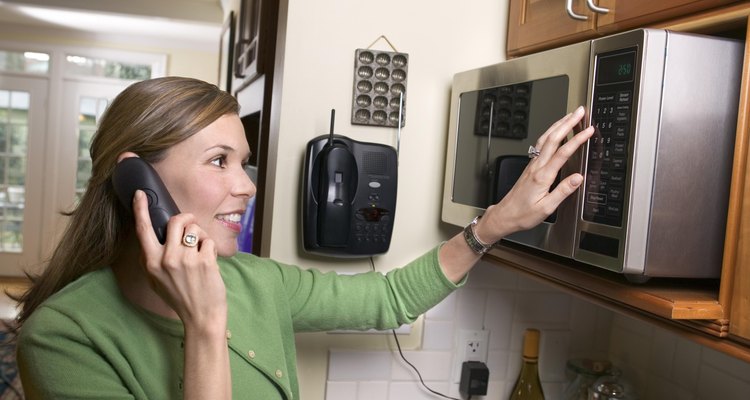
Thinkstock/Stockbyte/Getty Images
Miracle noodles, also known as shirataki noodles, are a boon to dieters, with zero calories and zero starch. They are made from konnyaku, which comes from a plant known as the "devil's tongue," long used in Japanese cookery. The noodles, which are shaped to resemble various types of pasta in texture and form, are a relatively new innovation. Because they are entirely made of soluble fiber, they quickly lead to a sense of fullness, but do not provide calories. As such, they should be eaten in combination with a range of healthy foods for a meal that provides all your essential nutrients.
Put your miracle noodles in a colander and run water over them to rinse. Toss the noodles with your fingers to rinse them completely. Shake the colander gently to drain noodles of any excess water.
Select a flavorful sauce to impart flavor to the noodles. Prepare the sauce, as necessary, on the stove-top following your usual method. Heat a ready-made sauce according to the directions, using the microwave if possible.
Prepare vegetables or meats following your standard preferred method, whether stir-frying, steaming or baking. Cook veggies until just "al dente" to retain the most vitamins, as you must rely on them, and not the noodles, for the meal's nutrient content. Reserve tender and leafy veggies, such as spinach leaves, to cook in the microwave with the noodles.
Put the noodles and any sauce or leafy veggies in a microwave-safe bowl. Heat in the microwave for up to one minute. Adjust the cooking time to suit your particular microwave, stopping it and checking on the noodle dish intermittently.
Stir the noodles to evenly coat them in the sauce and distribute heat throughout. Serve them with any vegetables, meats or sauces prepared separately. Top the heated noodle dish with toppings or garnishes, such as chopped herbs or toasted sesame seeds.
Related Articles

How to Cook Luglug Cornstarch Noodles

How to Cook Lasagna Noodles so They ...
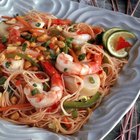
Calories in Gluten Free Pasta

How to Make a Quick Snack Made of Ramen ...

Directions on How to Cook Soba Noodles

How to Cook Penne Rigate Noodles in the ...
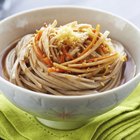
Difference Between Soba and Udon Noodles

How to Cook Pasta in the Microwave or ...

Cooking Dried Banh Pho Noodles
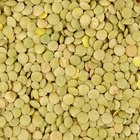
How to Cook Trini Style Lentils
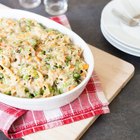
How to Make Tuna and Noodle Casserole
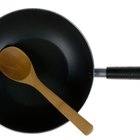
How to Fry Raw Spaghetti

The Difference Between No-Boil & ...

How to Style Synthetic Hair

Calories in Pasta Fagioli Soup
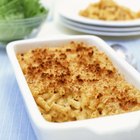
How to Bake Mac & Cheese With a Bread ...
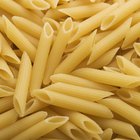
Calories in Pasta Noodles
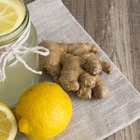
Can I Exercise on the Master Cleanse ...
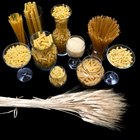
Calories in Cooked Wheat Pasta
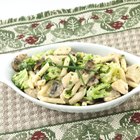
Calories in 1 Cup of Pasta Primavera
References
Warnings
- Avoid using miracle noodles to completely replace meals. Instead, use them as a substitute for processed foods or "empty calories." Avoid nutrient deficiencies by keeping your diet well-balanced with plenty of low-energy-dense foods, such as fruits and vegetables.
- Combine a reduced-calorie diet with regular exercise for the most effective weight loss; to shed pounds, you need to burn more calories than you consume each day.
- Don't rely on the noodles to give your dish flavor. They have the same texture and form as familiar wheat-based pasta, but are completely bland in taste.
Writer Bio
Danielle Hill has been writing, editing and translating since 2005. She has contributed to "Globe Pequot" Barcelona travel guide, "Gulfshore Business Magazine," "Connecting Lines: New Poetry from Mexico" and "The Barcelona Review." She has trained in neuro-linguistic programming and holds a Bachelor of Arts in comparative literature and literary translation from Brown University.
Photo Credits
Thinkstock/Stockbyte/Getty Images